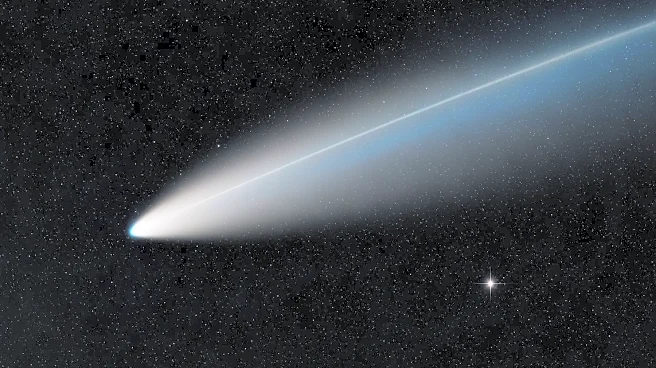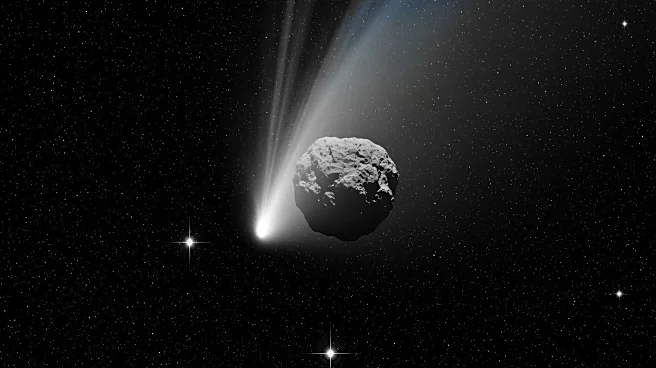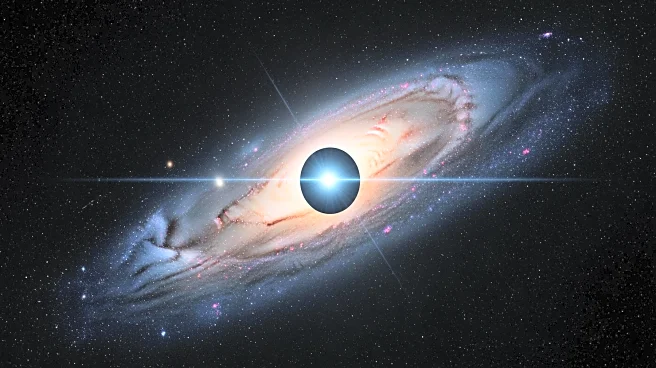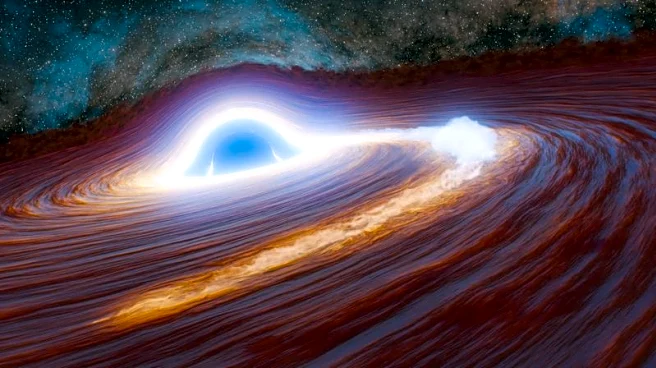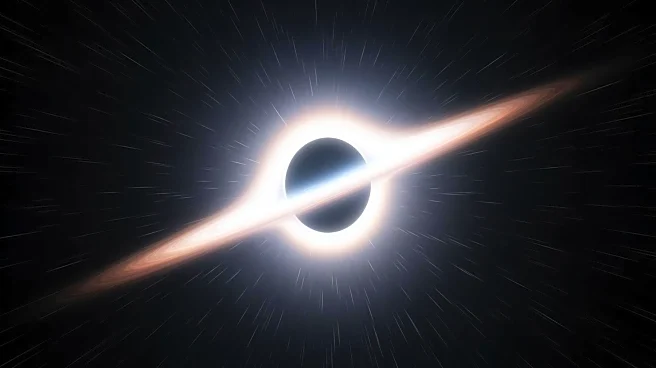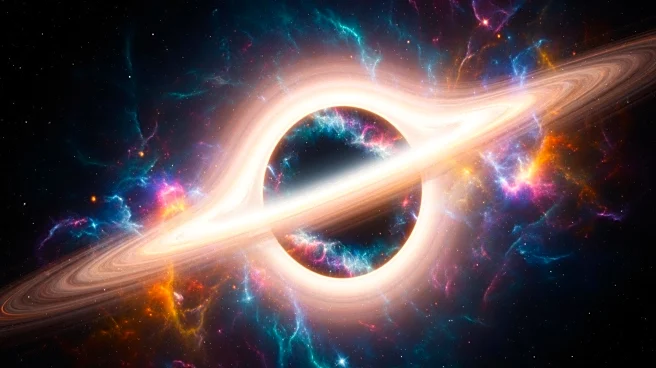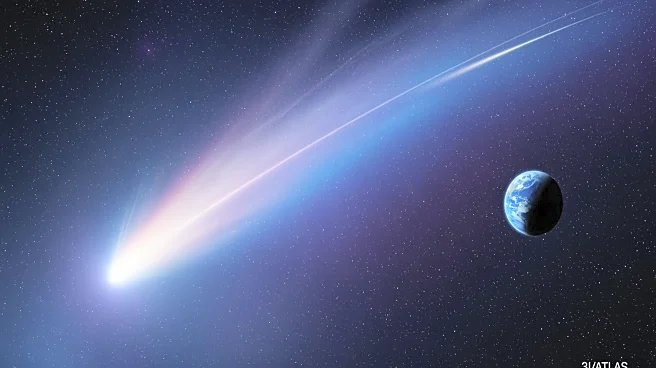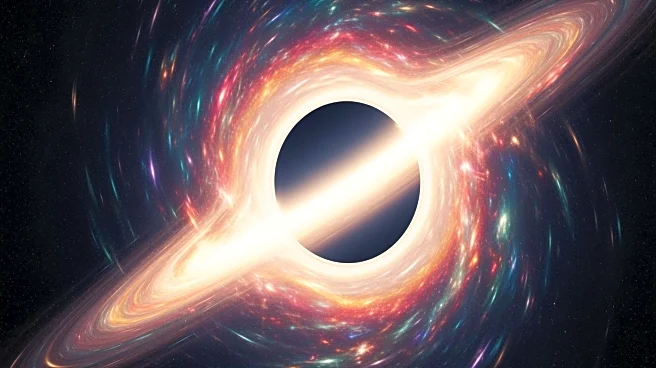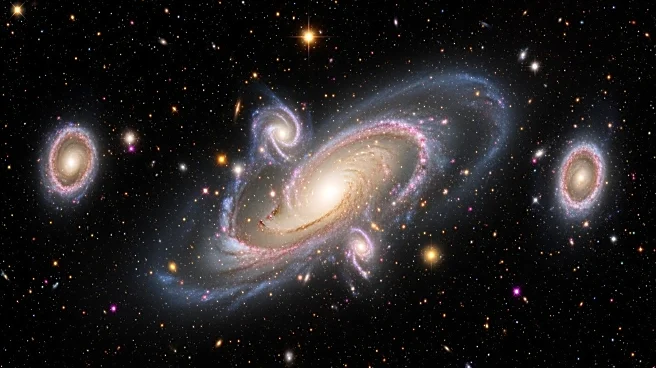What's Happening?
A supermassive black hole has produced the largest flare ever recorded, emitting light equivalent to 10 trillion suns. This cosmic event, detected from 10 billion light-years away, involved a black hole consuming a massive star, leading to an unprecedented
outburst. The flare, which has been ongoing for over seven years, was first identified in 2018 during a sky survey. The black hole, estimated to be 500 million times the mass of the sun, devoured a star at least 30 times the sun's mass. This event has significantly altered scientists' understanding of black holes, revealing a more dynamic environment than previously thought.
Why It's Important?
The discovery of this massive black hole flare provides new insights into the behavior and evolution of supermassive black holes. It challenges previous notions of black holes as static entities, suggesting a more active and dynamic nature. This finding could influence future astronomical research and theories about galaxy formation and the role of black holes in the universe. The event's scale and energy output also highlight the potential for further discoveries in cosmic phenomena, offering a deeper understanding of the universe's most powerful forces.
What's Next?
Researchers plan to conduct follow-up studies to confirm the findings and explore the mechanisms behind such flares. The ongoing observation of this flare will continue to provide valuable data, potentially leading to new discoveries about black hole dynamics. As the flare fades, it will remain observable with ground-based telescopes, allowing scientists to gather more information and refine their models of black hole behavior.


